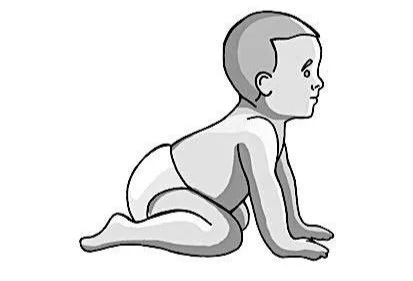More than Meets the Eye: The Link Between Vision & Posture
Published: 1 Aug 2024
When children develop visual issues at a young age, very often - the solution is to treat the eyes only. One connection is often overlooked - and that is posture! Here, we explore the link between visual processing and posture, and an important reflex associated with visual skills.
Watching the way a child moves their body can give us an indication of where they’re at in terms of their visual motor skills. When a child has good control of their head, this allows eyes to be levelled for eye teaming tasks, convergence, divergence, and smooth horizontal tracking. However, children with lower tone or those with poor coordination skills potentially have a higher difficulty keeping their head stable, leading to them to being more susceptible to having visual challenges.
One reflex that we can look at is the Symmetric Tonic Neck Reflex (STNR). This reflex is particularly active in a baby when they are 6 to 9 months old, and is often integrated into the whole body movement by the time they are 9 to 11 months. This is a postural reflex that allows visual and auditory perceptions to develop at a deeper level. In this posture, the entire body from head to toe is in a position of quiet focus with a body that’s balanced, a stable head, levelled eyes and ears.
The STNR reflex prepares a child for the all-important crawling stage. It is crucial for developing binocular vision - or the ability to use both eyes to focus on a single object, whether it’s near, at a distance, or in the periphery. It is important in maintaining balance to support space and depth perception, postural control and visual stability for fine motor activities like writing, drawing and reading. As such, it is important in the development of focus and cognitive ability.
In children where the STNR is not integrated, we often see them excessively lift or lower their heads, because they are unable to stabilise and control the head efficiently. This negatively affects visual processes and can lead to schooling challenges later. Here then is the link between visual motor skills and posture. Often, the presence of visual challenges is not simply an issue with the eyes themselves but it could also be an indication of unintegrated reflexes.
When our children encounter vision issues, it is always helpful to take a step back and consider a more integrated and holistic approach. This way, we are able to take in the bigger picture and consider other variables that may be otherwise missed out.
At Neural Connections, we focus on offering treatment and protocols to help children regulate their emotions and behaviour better. Schedule a Discovery Call with us today to see if we can help.
References
Parents’ Guide to MNRI, by D. Masgutova and S. Masgutova: https://masgutovamethod.com/estore/all/parents-guide-to-mnri
https://drbishop.com/unexpected-link-between-posture-and-your-eyes/
https://visionforlifeworks.com/blog/2021/01/04/posture-and-your-vision/
https://brmtcanada.com/blomberg-rhythmic-movement-training/reflexes/stnr-atnr-reflex/


